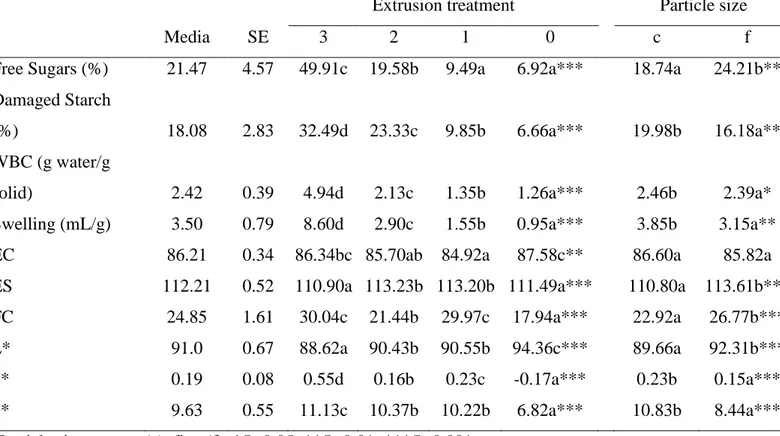Effect of different extrusion treatments and particle size distribution on the physico chemical properties of rice flour
Texto completo
Figure



Documento similar
The aim of this study is to investigate the effect on the physical and mechanical properties of four different types of mortars after exposure to a sulfuric acid attack: (i) a
Abstract: Transepidermal water-loss (TEWL), stratum-corneum hydration (SCH), erythema, elas- ticity, pH and melanin, are parameters of the epidermal barrier function and
To evaluate the effect of the flocculant on the suspended particle size, the initial sample (Sample A) and a sample of the biogenic sulfur present clarified effluent after the
Since experimental conditions did not affect the retention and selectivity coefficients for the different chemical compounds, the effect of membrane pore size on
Many experiments have evaluated the effect of different levels of DLI on growth, development, and plant quality on a wide range of crops [98,99] and the effect on consumption
The present work studies the effect of the incorporation of electrospun polyamide 6 (PA6) nanofibre veils coming from two different types of pellets in the final mechanical
A putative fumaryl acetoacetate hydrolase was also induced by salinity stress (1.62-fold on day 1, and 2.84-fold on day 11, returning to basal levels during recovery) and the
influence of these parameters on the size and distribution of Te inclusions, deep defects, optical and electrical properties of CdZnTe detectors. In the fourth chapter, the effect